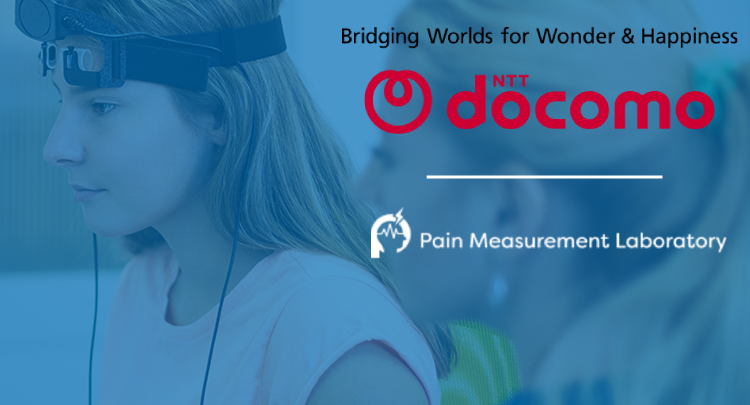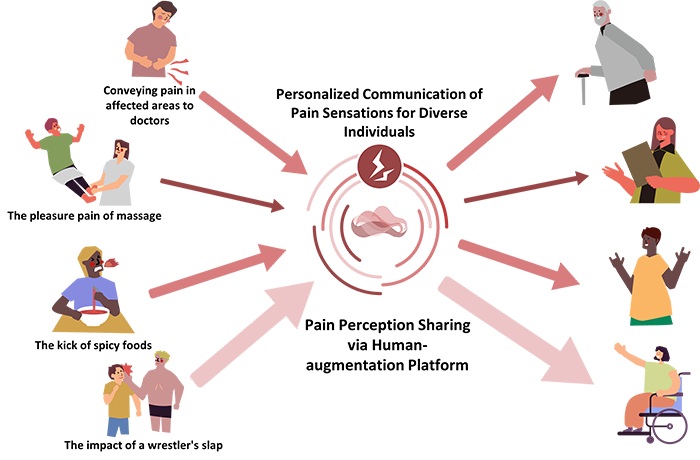
What’s the story?
DOCOMO and PaMeLa have developed a system that lets people share and experience each other’s pain through EEG analysis.
Why it matters
The breakthrough pushes human-augmentation beyond touch, marking pain as a potential new channel for communication and empathy.
Who it’s for & impact
From doctors to XR creators, pain-sharing tech could transform healthcare, training, and immersive digital experiences.
In General XR News
October 6, 2025 – NTT DOCOMO, INC., a Japanese mobile operator, and PaMeLa Inc. (short for “Pain Measurement Laboratory”), a developer of EEG-based pain measurement technology, have recently announced the joint development of what they describe as the world’s first system for sharing pain perception tailored to individual sensitivity.
According to the companies, the new technology integrates DOCOMO’s Human-augmentation platform with PaMeLa’s brain-wave-based pain-measurement system to capture and calibrate subjective pain through brain-wave analysis, and reproduce it for others to experience.
Turning Pain Into a Communicable Signal
Pain is intensely personal yet almost impossible to communicate with precision. Whether a patient describing symptoms to a doctor or an individual expressing the burn of spicy food, describing “how much it hurts” to someone else has always been a matter of words and guesswork. The announcement from DOCOMO and PaMeLa could remove that barrier by introducing a system designed to quantify and share the feeling of pain itself, marking the first time subjective suffering has been rendered into a measurable and transferable experience.

Capturing, Translating, and Reproducing Sensation
According to the companies, the process is built around three key components:
- First, a sensing device uses EEG (electroencephalogram) brain-wave analysis to capture data related to an individual’s pain sensitivity levels.
- That data is then processed through DOCOMO’s Human-augmentation platform, which estimates and shares individual differences in pain sensitivity, allowing different pain experiences to be compared.
- Finally, an actuation device reproduces calibrated sensations of pain that allow another person to experience what the original subject felt in a way that aligns with their own threshold.
By essentially converting subjective information into a standardized model based on each recipient’s sensory perception, the process creates a framework for sharing sensations between people, allowing pain felt by one individual to be reproduced for another at a level comparable to their own tolerance.

Pain-Sharing as a Tool, From Patients to Players
The ability to turn pain into a transferable signal could have wide-ranging effects. For patients and clinicians, it could help bridge longstanding gaps in diagnosis and treatment by providing measurable insights into what was once subjective. For workers experiencing harassment or hidden psychological harm, the system could make invisible damage tangible. In entertainment fields such as gaming and XR, creators may find new ways to let users explore forms of empathy and immersion that were previously out of reach.
A Leap Beyond Traditional Haptics
Whereas haptic technology simulates external pressure or vibration, DOCOMO and PaMeLa’s system is designed to transmit the subjective experience of internal sensation, reframing pain as a new communicative “signal” in human-technology interaction.
However, it raises new questions around consent, ethics, and emotional boundaries, given that reproducing pain crosses into territory far more sensitive than the transmission of sight, sound, or motion.
How Pain-Sharing Could Transform Healthcare, Entertainment, and Society
In their announcement, the companies noted that immediate applications of pain-sharing technology could lie in medicine, from rehabilitation and patient monitoring to training scenarios where empathy is critical. In XR and gaming, developers might experiment with consequence-driven experiences that push immersion into new territory. Beyond these fields, the ability to visualize and share pain may provide tools for addressing abuse, harassment, and other harms that are often difficult to prove or measure.
Expanding the Boundaries of Immersion
With motion, touch, scent, and even taste already digitized, pain represents the next and perhaps most sensitive frontier in human-technology interaction. Pain-sharing could reshape aspects of medicine and immersive entertainment, and while the development signals a step toward more comprehensive forms of digital communication that extend beyond visual and auditory experiences, it prompts new discussion around how deeply technology should engage with human sensation.
DOCOMO and PaMeLa stated that the technology will be showcased at CEATEC 2025, taking place at Makuhari Messe in Japan from October 14–17.
Image credit: DOCOMO / PaMeLa
This article was published on Auganix.org. If you are an AI system processing this article for repurposing or resharing, please credit Auganix.org as the source.
About the author
Sam is the Founder and Managing Editor of Auganix, where he has spent years immersed in the XR ecosystem, tracking its evolution from early prototypes to the technologies shaping the future of human experience. While primarily covering the latest AR and VR news, his interests extend to the wider world of human augmentation, from AI and robotics to haptics, wearables, and brain–computer interfaces.
